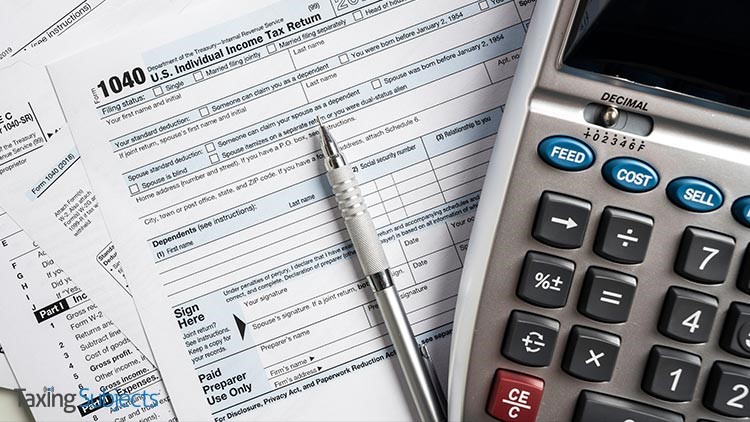by | Apr 28, 2020 | Tax Tips and News
The Internal Revenue Service wants to make sure taxpayers timely receive their Economic Impact Payments, which is why they worked with the tax industry to develop online reporting and tracking tools for IRS.gov. While non-filers receiving Supplemental Security Income (SSI) and Veterans Affairs (VA) benefits are scheduled to automatically get a $1,200 Economic Impact Payment, the IRS says beneficiaries need to report qualifying dependents before May 5, 2020, to receive an additional $500 per qualifying child with their EIP.
What is the $500 dependent payment?
With the CARES Act, Congress authorized $1,200 Economic Impact Payments to help Americans facing financial hardship due to the coronavirus epidemic. The legislation also included a provision designed to give families extra help: Eligible filers receive an additional $500 payment per qualifying dependent. The recent IRS press release is the agency’s latest effort in its “Plus $500 Push” campaign.
Why do SSI and VA beneficiaries need to report dependents?
While non-filers who receive SSI and VA benefits will automatically receive a $1,200 payment in the coming weeks, the IRS does not currently have information related to those Americans’ qualifying dependents. So, beneficiaries need to supply the IRS with additional information to receive the “plus $500.”
How do SSI and VA beneficiaries report dependents to the IRS?
The agency developed the Non-Filers: Enter Payment Info Here tool on IRS.gov to help Americans who don’t normally file a tax return conveniently report their EIP qualifying information. To find it, go to IRS.gov and click the upper-left-hand link titled “Non-Filers: Enter Payment Info Here.”
Why is May 5 the deadline for SSI and VA beneficiaries to report dependents to the IRS?
Since the IRS is automatically sending SSI and VA beneficiaries their $1,200 Economic Impact Payment in a few weeks, the only way they will get the additional $500 payments at the same time is if they report that information to the IRS by May 5. Here’s another wrinkle: They will not be able to use Non-Filers: Enter Payment Info Here to report qualifying beneficiaries after the deadline.
Can SSI and VA beneficiaries who miss the dependent reporting deadline still receive the additional $500 payments?
SSI and VA beneficiaries will still be able to receive the additional $500 payments per each qualifying child if they report those dependents to the IRS after May 5, 2020. Those payments will simply come separately from the initial $1,200 EIP.
Source: IR-2020-81
– Story provided by TaxingSubjects.com
by | Apr 25, 2020 | Tax Tips and News
The U.S. Treasury Department and the Internal Revenue Service say they’ve delivered 88 million stimulus payments to taxpayers during the first three weeks of the program.
As of April 17, the IRS issued 88.1 million of the Economic Impact Payments (EIPs) to individual taxpayers across the U.S. The agency says more payments are continuing to be delivered each week.
“The IRS, Treasury and partner agencies are working non-stop to get these payments out in record time to Americans who need them,” said IRS Commissioner Chuck Rettig. “Tens of millions of people across the country are receiving these payments, and millions more are on the way. We encourage people to visit IRS.gov for the latest information, FAQs and updates on the payments.”
In all, more than 150 million payments are expected to be sent out. Millions of individuals who do not typically file a tax return are also eligible to receive the payments. The payments are automatically sent out to people who filed an income tax return in 2018 or 2019, and those who receive Social Security retirement, survivor or disability payments (SSI), or Railroad Retirement benefits. Payments are also going out to Supplemental Security Income (SSI) and Veterans Affairs beneficiaries who did not file a tax return in the last two years.
By the Numbers
As of April 17, California showed the most EIPs, receiving over 9 million payments. Texas wasn’t far behind with more than 7.8 million payments received. On the other end of the scale were Wyoming and Vermont, with 166,000 and 188,000 payments respectively.
Looking at the big picture, the Treasury Department says the 88.1 million Economic Impact Payments totaled more than $157 billion in relief funds.
Need More Help?
The IRS website, IRS.gov, has a variety of online tools and other resources to help individual taxpayers and businesses navigate the Economic Impact Payments and get needed information about EIPs and other relief provisions.
The IRS says it is seeing a variety of questions coming in about Economic Impact Payments, ranging from eligibility for payments to timing. The IRS has developed a list of Frequently Asked Questions (FAQs) for an overview; the list is updated frequently. Check the FAQs often for the latest updates and additions’ many common questions have already been answered on IRS.gov and more answers are being developed every day.
– Story provided by TaxingSubjects.com
by | Apr 25, 2020 | Tax Tips and News
The CARES Act removes an ACA limitation on using FSA, HSA, and HRA funds to pay for over-the-counter medication.
The CARES Act—famous for authorizing the $1,200 Economic Impact Payments that Americans have begun receiving—also includes important, coronavirus-related changes for flexible spending accounts (FSAs), health savings accounts (HSAs), and health reimbursement arrangements (HRAs).
This isn’t the first time that changes have been made to tax-advantaged health plans during the coronavirus outbreak. As noted in a previous Taxing Subjects blog, the IRS issued a notice allowing taxpayers with high-deductible health plans to pay for COVID-19 medical care with funds in a qualifying HSA account. NPR’s Selena Simmons-Duffin’s reports that this CARES Act change further expands how policy holders can spend funds in their FSA, HSA, or HRA by classifying other-the-counter (OTC) medication and medical products as reimbursable expenses.
Essentially, the CARES Act removes an Affordable Care Act provision stipulating that only prescribed medication qualified to be purchased with FSA, HSA, and HRA funds—disallowing OTC meds. Simmons-Duffin speculates that this change will help the policy holders “[stock] up on fever reducers and cough medicine as the coronavirus spreads around the country,” something that could affect “‘nearly 60 million Americans.’”
Depending on the length and severity of the COVID-19 outbreak, Congress could pass further tax relief measures in the coming months. Just this week, the House of Representatives seems poised to pass a bill providing relief to small businesses. For the latest coronavirus tax relief information, be sure to regularly check “Coronavirus Tax Relief and Economic Impact Payments” on IRS.gov.
Source: NPR.org
– Story provided by TaxingSubjects.com
by | Apr 24, 2020 | Tax Tips and News
The April 23, 2020, IRS “Economic Impact Payment Discussion” webinar is postponed!
The IRS announced that today’s “Economic Impact Payment Discussion” webinar has been postponed. The notification did not cite any specific reason for the postponement, but organizations across the country are facing logistical difficulties as a result of coronavirus-related disruptions. The IRS like many private businesses has ordered its staff to work from home, leading to the temporary suspension of a wide variety of services.
Where can I learn more about Economic Impact Payments?
The IRS noted that tax professionals can get current coronavirus tax relief information from the Coronavirus Tax Relief and Economic Impact Payments web page on IRS.gov. This page aggregates recent IRS announcements about a number of EIP topics:
Coronavirus Tax Relief and Economic Impact Payments also lists information about recent updates to health and retirement plans, public health announcements about COVID-19, promotional material to help educate your clients, and more.
Sources: IRS notification; “Coronavirus Tax Relief and Economic Impact Payments”
– Story provided by TaxingSubjects.com
by | Apr 24, 2020 | Tax Tips and News
The coronavirus pandemic has thrown the 2020 income tax filing season for a loop; taxpayers and tax preparers have been given extra time to file returns, but the new deadline day of July 15 apparently isn’t helping some clients make better decisions.
Accounting Today magazine writer Jeff Stimpson spoke with tax professionals around the country to get their take on some of these perennial client missteps.
The Usual Suspects
Stimpson writes that a number of mistakes show up every filing season, no matter the year. These include missing or incorrect Social Security numbers, misspelled names, incorrect filing statuses, errors in math or incorrect bank account numbers.
Other errors are based in thought. That is, the client didn’t think their tax pro needed all the paperwork the client had in order to turn out a correct tax return. One tax pro said with the new tax laws that do away with many of the federal deductions, the client forgets that they may still qualify for itemized deductions on the state side. So, they just don’t bring the appropriate paperwork to them.
Another friction point is the client who thinks the internet knows better than their tax pro. Purported tax advice that starts out with “Google said,” or “this online message board said,” one tax professional lamented, is still just hearsay and may not be rooted in any sort of fact.
Errors of Omission
Stimpson writes that another type of client mistake is the omission. This can include unsigned forms and expired ITINs, as well as claiming incorrect deductions or credits.
Related to these are sins of withholding, with at least one tax pro finding clients struggling with the new Form W-4. Many people were under-withheld in 2018 when the first round of tax changes came through—and it’s persisted since then. Stimpson writes that tax reform reduced the amount of taxes taken out of a lot of paychecks. The problem arose when many clients didn’t recalculate their withholding and got a nasty shock at their tax bill last year—yet still didn’t follow the advice of their tax professional.
The IRS had to put off the launch of its new W-4 after complaints that it violated privacy, required too much information about other income, placed too much on employers to determine withholding amounts, and was just too complicated.
So, the original problem still exists. A Florida tax professional told Stimpson she’s still seeing clients who haven’t adjusted their withholding amounts and need to be shown just why their refund this year is less than before.
The tax pro notes that these same clients were given similar education last tax season and it apparently didn’t sink in. The client didn’t make the adjustments but had to pay the price at tax time.
Other mistakes don’t actually take place during tax season, but in the off-season. Tax professionals say many times, clients either neglect—or just don’t think about off-season tax planning at all. From buying or selling a home, children going to college, a major illness in the family and more, all, they agree, can have an impact on the client’s situation come tax time.
Our thanks to Jeff Stimpson and Accounting Today magazine.
– Story provided by TaxingSubjects.com





